Last Updated on June 5, 2023 by Georgie Smith
Circular Saw
Invented in the late 18th century and used in sawmills in the US, a circular saw uses a toothed or abrasive disc or blade to rip various materials. With the aid of a rotary motion spinning around an arbor, it cuts wood and other materials. This power saw also called a “Skil Saw” can be fitted to a purpose machine or used as a handheld tool.
In woodworking terms, the handheld type, the table saw, and the chop saw are common circular saws.
A circular saw can cut wood, masonry, plastic even metal and can either be powered by electricity, a gasoline engine, or a hydraulic motor.
Jigsaw
A Jigsaw refers to a type of power tool that comprises an electric motor and a reciprocating saw blade. In addition to normal vertical stroke, a jigsaw can cut angles up to 45 degrees, especially the one with the bevel feature. Some manufacturers refer to jigsaws as bayonet saws or saber saws. A jigsaw utilizes an attached blade accessory to saw wood.
Reciprocating Saw
A reciprocating saw refers to a machine-powered saw which cuts by a push and pulls (reciprocating) motion of the blade. A reciprocating saw also called a hognose, recip saw, or Sawzall has a large blade like a jigsaw’s. It has a handle that affords it the ability to be used comfortably on vertical surfaces. It comes with a foot at the base of the blade, and the user holds or rests this foot on the cutting surface. The foot keeps the saw steady when working and give the user control over the tool. [1]
Accounts
Free Trial
Projects
SSL
Storage
Li-Ion Circular Saw
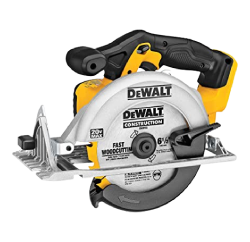
Brand - DEWALT
Blade Length - 6.5 Inches
Color - Yellow
Battery Powered
Easy to use
Reciprocating Saw
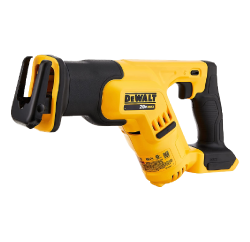
Brand - DEWALT
Battery Powered
Weight - 5.4 Pounds
Lightweight
Easy to Use
Jig Saw

BLACK+DECKER
Color - Black
Corded Electric
Easy to use
Weight - 4.6 pounds
Top 2 Best Circular Saws On The Market
DeWalt DCS391B 20-Volt MAX Li-Ion Circular Saw
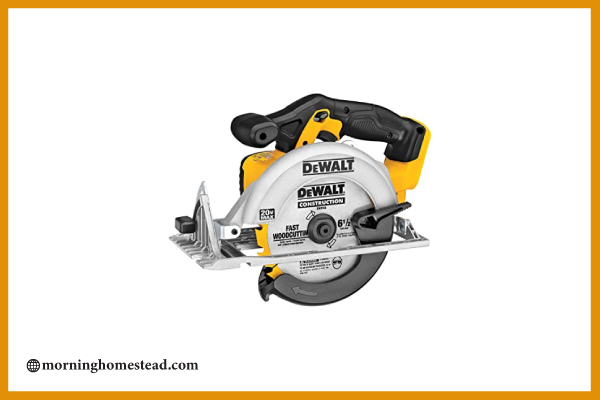
The DeWalt DCS381B Circular saw features a powerful 460 MWO, 5250 RPM motor. The motor delivers power and speed for the most demanding cuts with ease. The DCS391B, for job site durability, comes with high-strength and lightweight magnesium shoes. The magnesium shoe also makes for long-term cut accuracy.
To make the DCS391B easy to control, it comes with an optimized rubber over-molded comfort grip. However, the DCS391B is sold separately, and the battery is not included.
Specifications:
Unique Features:
DeWalt DWE575SB 7-1/4 Inch Lightweight Circular Saw with Electric Brake

The DeWalt DWE575SB Circular saw, comes with an electric brake that stops the spinning blade after releasing the trigger. The power tool was made to be one of the lightest, and most well-balanced saws in its class weight just 8.8 pounds. It has a ball-bearing lower guard that makes for durability. The lower guard also provides smooth retraction against dust contamination.
It has advanced lower guard geometry for bevel cuts with an integrated dust blower. The dust blower helps clear the work line while the user works. The DWE575SB might be small but has incredible power. It will serve framers, concrete formers, general contractors, and re-modelers best.
Specifications
Unique Features:
Top 2 Best Jig Saws On The Market
Black + Decker BDEJS600C Smart Select Jig Saw, 5.0-Amp

Black & Decker’s BDEJS600C comes loaded with features among which include Curve Control technology. The Curve Control technology allows the user to adjust the saw’s orbit in 1 of 4 customized settings for specific projects. The tool comes with a 5-Amp variable-speed motor that creates up to 3,000 SPM of cutting power.
Specifications:
Unique Features:
DeWalt DCS331B 20-Volt Max Li-Ion Jig Saw
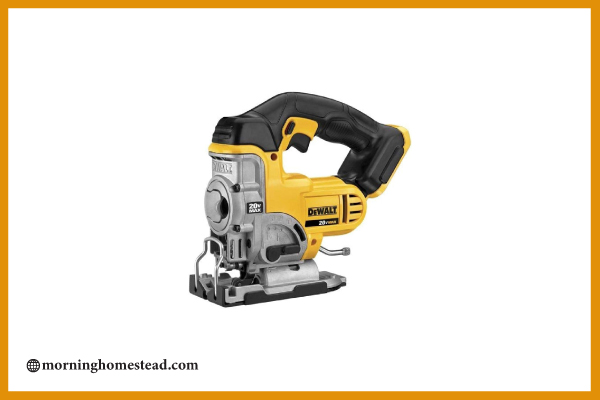
The DeWalt DCS331B comes loaded with features to give you the best of cuts. It comes with a keyless blade for quick blade change. For speed, it comes with 4-position orbital action. When you purchase this DeWalt jigsaw, you can rest assured that you made a significant investment in power tools.
Specifications
Unique Features:
Top 2 Best Reciprocating Saws On The Market
Black + Decker BDCR20B 20V Max Lithium Bare Reciprocating Saw

The BDCR20B comes with a tool-free blade change feature. It comes with a powerful 3,000 SPM motor that has a variable speed trigger. For control, the electric brake gives you all you that. The BDCR20B has a lightweight and versatile feature for ease of use.
Specifications
Unique Features:
DeWalt DCS387B 20-Volt Max Compact Reciprocating Saw (Tool Only)

The DeWalt DCS387B comes to your rescue for all your renovation and demolition projects. It comes with a compact and lightweight design that makes it easy to use even in tight spaces. It comes with an easy blade change feature, and a clear bright LED light to help light up dark areas. The DCS387B combines power and advanced technology.
Specifications
Unique Features:
Comparison: Circular Saw Vs. Jigsaw Vs. Reciprocating Saw
Here we did a comprehensive analysis of the three saws basing our judgment on specific properties and hereunder lies the report. After reading this report, you must be able to differentiate one from the other. These saws have their individual uses, merits, and demerits and anyone can deliver the job assigned. Do read on for more:
| Circular Saw | Jigsaw | Reciprocating Saw |
|---|---|---|
 |
 |
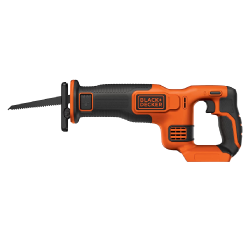 |
| Types of Cuts: – It can rip different materials. – It makes crosscuts and cut patterns easily. |
Types of Cuts: – It makes straight, curved cuts. – It cut angles from 90 degrees to 45 degrees. |
Types of Cuts: – It does crosscuts and plunge cuts. – It cuts through different materials quickly. |
| Pros: – It does flush cuts. – Works perfectly in cutting wood. – It stands as the safest of the three. – It can cut solid hardwood with ease. –It comes in handy in ripping and necessary miter cuts. – It‘s lightweight and perfect. |
Pros: – It‘s handy and lightweight. – It can cut different materials. – It can cut plunge or middle cuts. – It can be cut refined and accurately on different materials. – It works perfectly for bevel and compound cuts. – Make beautifully detailed work. |
Pros: – It‘s very powerful in handling heavy-duty jobs. – It can cut any material without limitation. – You can maneuver it easily and make it like you want. – Its open blade makes it easy to see the work area and line of cut. – It does a great job in demolition and renovation projects. |
| Cons: – Does not do justice to curve cuts. – Produces splintery edges. – Most dangerous three saws. |
Cons: – It requires care to handle. – It cannot do heavy-duty work. – If used with force the unit can be damaged. |
Cons: – It creates rough cuts – It does not cut with precision. – It can cause health issues due to prolonged use. |
| Performance: – Best in splitting long straight boards or hardwood. |
Performance: – It works best in detailed precision works. |
Performance: – It works best in renovation and demolition projects. |
How Do You Tighten A Circular Saw Blade?
A loose saw blade can fly out of the power tool during operation and cause severe harm or injury. We, therefore, recommend periodic checking of your circular saw blade. If the saw blade seems not well-fitting to the arbor, tightening it should be your next duty. However, if you just bought your circular saw and you want to assemble it, then tightening the saw becomes necessary.
Check the user’s manual for instructions on how to tighten the saw blade. If your circular saw came with a manual (which is always the case), then use the manual. On the other hand, follow our instructions if you bought a used circular saw without the user’s manual.
Here we put together a few simple DIY steps for tightening your circular saw blades:
1. Safety First:
Unplug the power saw and take it to a clean table in a lighted room.
2. Tool Check:
Check for the spanner or Allen key that came with your power saw or a socket wrench. You will use any of the available tools to tighten the arbor nut that holds down the blade.
3. Secure the Saw:
Check for the shaft lock on your saw and use it to lock the blade down to stop its spinning movement while you tighten the arbor nut. However, if your saw does not have a shaft lock, use a clamp or vise grip to secure it from spinning.
4. Confirm the blade’s direction of rotation:
Usually, the arbor nut tightens in the opposite direction of the blade’s rotation. The reason for such a rotational arrangement is that when the blade spins in one direction and the nut in another, the nut will remain secure.
However, if the blade rotates in the same direction as the nut, the rotation of the blade would unscrew the bolt, and it would fly out!
Therefore, right-handed circular saw blades turn anticlockwise so you should tighten the bolt clockwise. However, left-handed circular saw blades rotate clockwise, thus tightening the bolt anticlockwise.
5. Tighten the nut:
Hold the rim or outer flange of the nut with a wrench to stop it from spinning. Use your other hand to hold the spanner, Allen key, or socket wrench to tighten the nut in the opposite direction the blade rotates. After tightening the nut, confirm if the blade sits firmly on the arbor.
As earlier said, conduct a periodic check on your saw because a well-maintained power tool will serve you well without causing accidents.
Caution: If you have challenges tightening your saw blade yourself or cannot see yourself doing it, contact a repairer.
Jigsaw Tips and Essentials
Jigsaws delivers cleaner, smoother, and more accurate cuts if you use it appropriately. We put together a few tips and essentials that can help you make judicious use of the power tool. [2]
1. Protect The Work Surface
Hold down the saw firmly to keep the blade from chattering. It may vibrate a bit but control it. The downward force and vibration can damage the work surface. Please apply a layer or two of masking tape to the base of the saw to reduce marring; you can remove it after.
2. Cut Anything
Your jigsaw cuts not only wood but steel, copper, or any metal, plastics, ceramic tiles, fiber, cement siding, and so on. Note that to achieve the feat, choose the adequate blade for each material.
3. Square The Blade
To cut straight and perfect cuts, ensure your blade stands perpendicular to the base. The cut will come out square-edged if the blade isn’t bent.
4. Cut With The Good Side Down
The majority of jigsaws cuts on the upstroke, and when it does, chips and flakes show on the wood surface. If you own such a jigsaw, place the good side of the wood down while cutting. Conversely, you can buy a reverse cut or down-cut blades that saw on the downstroke.
5. Make a Metal Sandwich
In cutting sheet metal, place the metal between two sheets of ¼-inch plywood. That arrangement will result in low rattling. With the plywood holding the metal down, you will have a seamless noise-free cut.
6. A Blade for Every Occasion
As earlier said, vary the blade with the material you cut. Please do note that the larger the teeth, the more aggressive and rougher the cut, and vice versa.
7. Use a Fence for Perfectly Straight Cuts
Apart from curves, jigsaws can also cut straight lines, compound, and beveled cuts. To make straight lines, hold the workpiece firmly and guide the saw against a saw fence. Use also rails to raise the workpiece to avoid driving the saw into the benchtop which can cause bending and breaking of the blade.
What Is A Reciprocating Saw Used For?
Whatever your project type – significant construction or home use, the reciprocating saw will do the magic. The reciprocating saw is a versatile power tool that can do so many things. It can cut wood, metal, plastic, etc. It can do quick jobs though without much precision. You can maneuver it freely with your hand without so much as a guiding system.
The underlined make up the uses of a reciprocating saw:
1. Drywall Replacement
Replacing a damaged area of drywall can be a delicate job, especially with the conduit wiring and piping system. If you do not take care, you might destroy an electric cable or pipe within the wall. Therefore, a reciprocating saw will ensure you get the job done clean and without error. Just fit the drywall saw blade on the tool and you can cut through the areas you need without destroying the cables or pipes.
2. PVC or Metal Pipe Cutting
As a plumber, electrician, or installer, the reciprocating saw should form part of your essential tools. With a reciprocating saw fitted with a double-faced blade, you can cut PVC pipes, metal pipes, etc. You can also make perfect access holes for electric and pipework.
3. Cutting Stubborn Nails and Pins
At times a piece of furniture or construction might require dismantling and removing the nails and pins. Such tasks can quickly be done using a reciprocating saw. The saw comes with thin blades that can fit into any cracks to cut the nails or pins through.
4. Pruning Trees and Brushes
You can use a reciprocating saw in gardening. Because you can maneuver it easily, then you can use it to groom trees and bushes.
5. Cutting Metal
You can employ the use of a reciprocating saw to cut nails, metal sheets, pipes, and other types of metals.
6. Demolition
During demolition work, a reciprocating saw remains your sure bet. When demolishing in tight spaces, the saw will deliver. It delivers fast and powerful cuts even in the tightest of spaces. No matter the material that makes up the demolition work, be it wood, metal, bricks, tiles, etc., the saw will rip them apart.
7. Renovation and Construction
A reciprocating saw can quickly get you through so many projects, from construction to renovation jobs, you need not worry. Fitting windows and doors, and removing floor or wall tiles and linoleum can be done easily by the push-and-pull motion of the saw.
FAQs:
We have highlighted above just a few of the many uses of the reciprocating saw. The reciprocating saw utilizes its push-and-pull motion to get jobs done. However, a series of accessories abound that can be attached to it – versatility. The accessories come with different functions, and when connected to the saw, their functions come to play.
Q: Left-handed and Right-Handed circular saw, and what is the difference?
A: Some people confuse the two to mean the hand the user can use to operate the saw which is not true. A left-handed circular saw has its blade positioned on the left side of the handle while a right-handed circular saw has its blade positioned on the right side of the handle.
Q: Can wood-cut circular saw blades cut metal?
A: Absolutely not. The arbor sizes of the two are different. Manufacturers purposely made it so, to ensure the correct blade usage always. Metal cutting blades are more expensive than wood cutting blades.
Q: Is there any recommended thickness for the jigsaw blades for cutting stainless steel?
A: No. The only recommendation will be general, i.e., for thick materials like stainless steel get blades with fewer teeth per inch (TPI). E.g., for 24-gauge material, use an 18-24 TPI blade.
Q: Why the orbital setting on a jigsaw?
A: A jigsaw with an orbital setting can follow a circular movement that affords you the ability to cut faster in a straight line. The more the orbital action, the faster the saw and vice versa.
Q: Can I use just about any saw blade with my reciprocating saw?
A: Certainly yes. Your reciprocating saw blades can fit all reciprocating saws. It has a universal shank made to work with any reciprocating saw.
Q: Which of the reciprocating saw blades cut wood best?
A: The more aggressive tooth pitch of 6-10 TPI can cut nail-embedded wood. It can also cut 6 x 6 inches of posts and small tree limbs. A 5/8 TPI or 10/14 TPI combination blade can also rip wood. The blade can measure from 6 to 12 inches in length. However, to prevent the chances of bending the blade, as the length of the blade increase, the thickness should also increase.
Conclusion
After such a rich post, you should be feeling like a professional saw expert now. You can now differentiate one blade from the other. Now you can either buy a circular saw, a jigsaw, or a reciprocating saw for your work need. The project at hand should be your guide as you hit the mouse to make your purchase now.
Recall when you need precision work, then marry the jigsaw, but when heavy-duty demolition or renovation work beckons, your companion should be a reciprocating saw. The circular saw too has impressive functions for your other projects. Why wait, click the mouse now and start sawing away!
Why Choose Us?
We at MorningHomestead have vowed to give your quality with compromise as it relates to homesteading topics and valuable product reviews. Recall that we always deliver beyond your expectation and that we shall continue to do.
We enjoy love hearing from you lovely readers, thus leave your message, and do not forget to share this post. Finally, we appreciate you for investing your time to read this post. Cheers!





![Best Powered Reel Mower: Reel Mower Vs. Gas-Powered Mower [2023] Best-Powered-Reel-Mower](https://morninghomestead.com/wp-content/uploads/2020/07/Best-Powered-Reel-Mower.jpg)